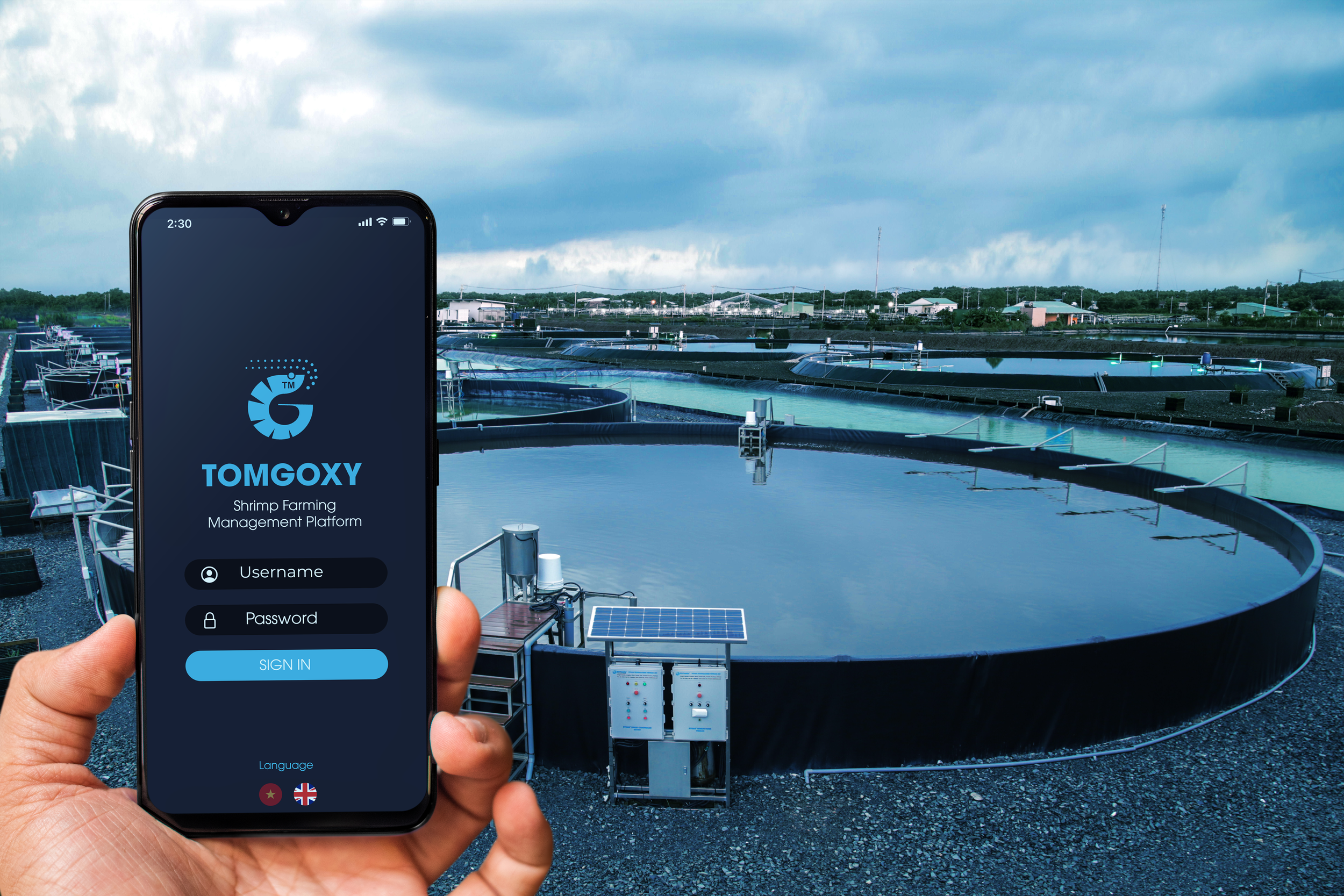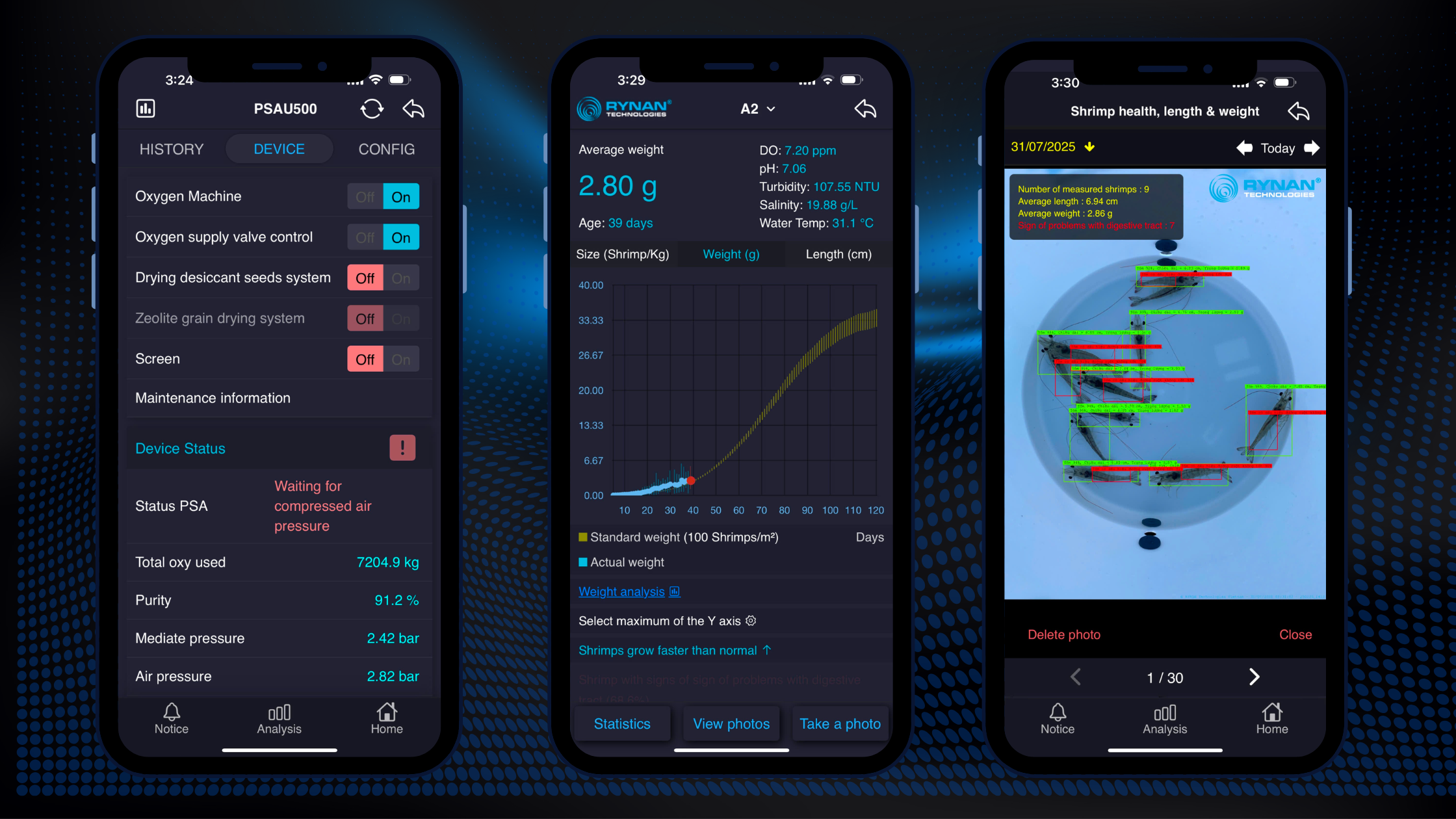Heavy Rains & Shrimp Ponds: Turning Weather Risks into a Digital Advantage
For the modern shrimp farmer, a heavy rainstorm is more than just a weather event, it’s a situation that demands timely action, sound judgment, and the use of digital tools to keep operations on track.
Running a shrimp farm today isn’t only about aquaculture, it’s about managing a valuable biological asset. For next-generation managers, successors, or startups in the industry, the goal isn’t simply to “raise shrimp,” but to increase yields and profitability using data, technology, and long-term planning.
In this context, rain isn’t a surprise, it’s an expected scenario. How you respond to it determines whether you face unnecessary losses or demonstrate the strength of your operational system.
Situation Analysis – A Multi-Layered Impact
When rain hits, your pond system undergoes a multi-layered attack, starting from the surface and affecting the entire ecosystem.
First, there’s a chemical and biological shock at the surface. Rainwater with its low pH and lack of minerals, gradually reduces alkalinity and hardness, which are crucial buffers for healthy shrimp molting. At the same time, surface runoff brings in soil, organic debris, and pathogens from the banks, making the water murkier and the environment more stressful.
But the real danger lies in the cascading effects. Prolonged cloudy conditions can lead to phytoplankton die-off, causing a drop in dissolved oxygen (DO) during the night. This low-oxygen environment, now fueled by newly introduced bacterial populations, creates a perfect storm for disease outbreaks. Meanwhile, the organic matter settling at the bottom of the pond combined with lower pH can accelerate the production of hydrogen sulfide (H₂S), a silent killer in shrimp farming.
Environmental Stress = Financial Loss
Each of these environmental changes directly translates into financial damage, impacting your profitability:
🔸 Slower Growth and Higher FCR: Stressed shrimp eat less and divert energy to survival rather than growth. This means more feed costs per kilogram of harvested shrimp.
🔸 Drop in Survival Rates: Post-molt mortality surges due to mineral and alkalinity deficiency. More critically, disease outbreaks from bacteria and fungi to viruses like White Spot Syndrome (WSSV) and AHPND can escalate quickly under these conditions.
What begins as a weather event often ends as a profitability issue unless farms have the systems in place to detect, respond, and stabilize conditions before risks escalate.
TOMGOXY – A Management Platform for the New Generation of Shrimp Leaders
Traditional responses to rain events are reactive and fragmented. But with digital infrastructure, shrimp farms can shift toward proactive, data-informed decisions. This is where the TOMGOXY platform plays a transformational role.
Built for modern aquaculture management, TOMGOXY combines real-time monitoring with predictive analytics, giving farmers the insights they need to act early, accurately, and efficiently.
1. 24/7 Remote Operations Control
You don’t need to be physically present at the pond. Multi-depth sensors deliver real-time data on pH, DO, ORP, and temperature straight to your app. Every alert, every trend is at your fingertips whether you’re at home or in a meeting. This is the freedom and control of digital management.
2. From Reactive to Predictive Thinking
This marks a shift in mindset. TOMGOXY doesn’t just show you what’s happening, it helps you anticipate what’s next. With real-time data conveniently accessible via your phone or dashboard, you can detect gradual drops in alkalinity after rain and intervene before it affects shrimp health. You can also analyze historical trends to identify which pond is most likely to experience oxygen depletion at night, allowing you to activate the RYNAN Oxygen Generator proactively, rather than reacting after shrimp show signs of stress at the surface.
3. Maximizing ROI with Precision
Every data-driven decision is a smart financial move. Run the oxygen system only when necessary and cut electricity costs. Avoid overusing chemicals by applying only what's needed. Healthy shrimp in stable water conditions eat more consistently, so less feed goes to waste and more gets converted into growth.. Every improvement adds up to better profit margins per cycle.
4. Build a Scalable Foundation
Digital data creates a foundation for SOPs, staff training, and future investment. It shifts shrimp farming from intuition-based decisions to a systemized approach that delivers consistent quality and results.
Shrimp Farming for the Next Generation
The future of aquaculture depends not only on biological expertise, but on digital readiness. Heavy rains, temperature shifts, and ecosystem imbalances will become more frequent, but farms equipped with the right technology can turn these into competitive advantages.
TOMGOXY is not just a digital dashboard. it’s a strategic tool for sustainable, scalable, and smart aquaculture.
Whether you're inheriting a family farm, building a new aquaculture venture, or investing in digital transformation, this is the kind of infrastructure that modern shrimp farming requires.
Now is the time to lead with insight, act with precision, and grow with confidence. TOMGOXY is the platform to turn that vision into reality.




